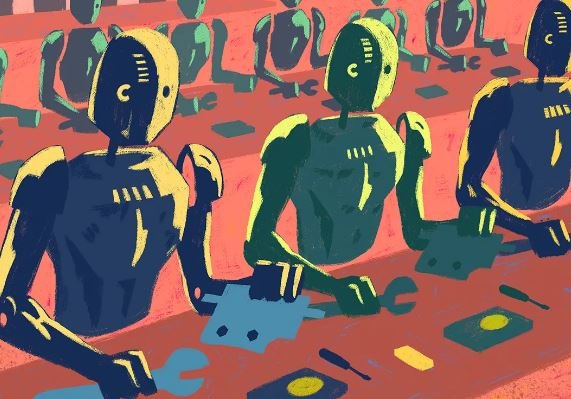The emergence of artificial intelligence as a transformative force in our century is no longer a subject of speculation but a daily reality shaping how we work, think, and create. AI has moved beyond the realm of novelty and research labs to become a mainstream tool in sectors ranging from healthcare and finance to media, manufacturing, and education. As we stand at the cusp of this technological shift, it is imperative to assess how artificial intelligence is not merely automating tasks but redefining the very nature of human potential, productivity, and creativity, while gradually laying the foundation for a new socioeconomic paradigm.
One of the most compelling aspects of AI is its unprecedented ability to enhance productivity. Through intelligent automation, complex data analysis, and predictive modeling, AI systems are enabling organizations to function with a level of efficiency that was previously unimaginable. Routine tasks that once consumed hours of manual effort are now executed in minutes, allowing human resources to be redirected towards more strategic, value-driven functions. This is particularly evident in fields such as supply chain management, customer service, and even journalism, where AI-generated insights are guiding human decision-making with remarkable accuracy. Far from rendering human workers obsolete, in many cases, AI is acting as a powerful enabler, augmenting human capabilities rather than replacing them. However, the conversation around AI must go beyond productivity and delve into its evolving relationship with human creativity. Traditional wisdom would have us believe that creativity is an exclusively human domain—fluid, intuitive, and inspired. Yet, AI is increasingly challenging that belief. Tools powered by generative algorithms are now capable of composing music, creating visual art, and drafting compelling written content. While such outputs often rely on patterns found in existing human work, they open new doors for creative collaboration between humans and machines. Instead of fearing a loss of originality, the opportunity lies in embracing AI as a co-creator that can spark ideas, expand aesthetic boundaries, and democratize access to creative tools for individuals who may not have formal training in the arts. Creativity, rather than being stifled, stands to be redefined—more inclusive, more experimental, and deeply collaborative. Still, this transformative potential is accompanied by profound economic and ethical challenges. As AI continues to reshape the labour market, the risk of dislocation for large segments of the workforce is very real. Jobs that are repetitive or data-centric are most susceptible to automation, creating a pressing need for reskilling and education strategies that prepare workers for the demands of an AI-augmented economy. Policymakers must work in tandem with industry leaders and educators to ensure that the benefits of AI are distributed equitably and do not exacerbate existing inequalities. The rise of AI also compels us to reimagine social contracts around labour, privacy, and accountability. Who is responsible when an algorithm makes a flawed decision? How do we maintain transparency in machine-generated outcomes? These questions underscore the urgency of building robust ethical frameworks and regulatory systems to accompany AI’s integration into society. Moreover, the socioeconomic implications of AI are not confined to employment alone. By influencing everything from consumer behaviour to political discourse, AI is quietly but fundamentally reshaping societal norms and governance structures. Predictive algorithms used in social media and digital marketing, for instance, have a significant impact on public opinion, mental health, and civic engagement. If left unchecked, these technologies can reinforce biases and deepen divides, further complicating the pursuit of a fair and inclusive society. Therefore, human oversight, transparency, and ethical alignment must remain central to AI development and deployment.
In its fullest expression, artificial intelligence is not just a tool of convenience or efficiency—it is a force that is redefining the boundaries of what humans can achieve. It calls on us to adapt not just our industries and institutions, but also our understanding of work, creativity, and the collective human journey. The future of AI is not something to be feared, but rather something to be guided with vision, responsibility, and a firm commitment to human dignity and potential.




